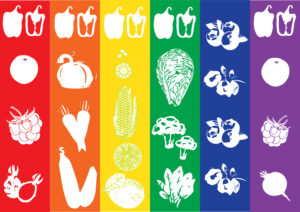
Phytochemicals – a colorful rainbow that is edible
Natural light separates into seven different colors through a prism, which is red, orange, yellow, green, blue, indigo, and purple. Luckily these are the colors you can find on your dinner table, a full spectrum of the rainbow that is edible. Colorful food is a visual delight, the diversified colors are not just an enhancement of the appearance of food but also beneficial to our health in many ways. In this article, the colors are […]
Read More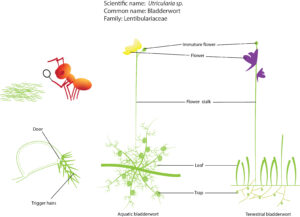
Utricularia – the smallest but fastest carnivorous plant
There is the various size of the carnivorous plant, but there is a carnivorous plant that does not look like one due to its tiny size and hidden preying mechanism. This species of Utricularia is under the family of Lentibulariaceae and native to North America. Commonly known as bladderworts, it was virtually unknown except to specialists such as aquarium hobbyists due to several reasons. They are always found in very wet areas or in the […]
Read More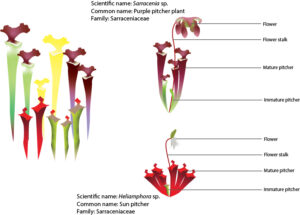
Pitcher plants – the “reed pipe” in nature
Background Pitcher plants are scattered around the world. Apart from Nepenthes and Darlingtonia, there are two more pitchers with different genus that are generally known as the American pitcher plants. Namely, Sarracenia and Heliamphora that both under the family of Sarraceniaceae. They are referred to as passive carnivores in which they use a passive preying mechanism that solely relies on the nectar and color or pigmentation of the modified leaves without any structural movements of […]
Read MoreHow do plants achieve their form and stature
View, browse, and/or download material for educational and temporary copying purposes only.
Read More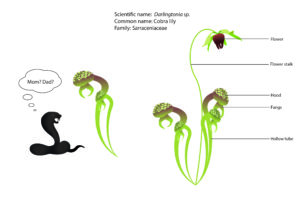
Darlingtonia, the cobra in carnivorous plants
Background Darlingtonia is commonly known as cobra lily due to its startling and special morphological structures. It is dicots, asterids, and found under the family of Sarraceniaceae. Obviously, Darlingtonia is very closely related to Sarracenia which is an allied genus known as trumpet pitchers that is indigenous to the eastern coast of the USA. It is so special with its bulbous green or red heads with a twisted colorful tongue that looks exactly like a cobra. […]
Read More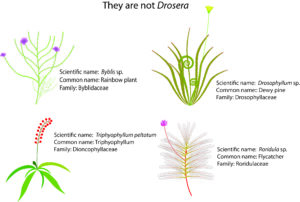
Carnivorous plants that look like Drosera
Well, we heard of sundew, the Drosera, when the dew is shined by light, it produces a mini rainbow. Why does it not called a rainbow plant? This is because the rainbow plant, the common name, is taken by Byblis under the family of Byblidaceae that is native to Australia. Byblis can appear as frosted sprays of water and sparkle with multicolored hues in the presence of light. It is not a sundew but it […]
Read More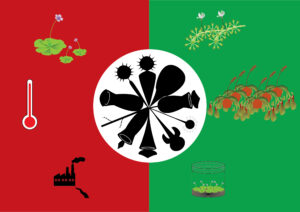
An imagination story: an introduction of carnivorous plants
Plants are mostly autotrophic that produce food by photosynthesis from inorganic raw material like sunlight and carbon dioxide. However, there is a very special group of plants that evolved in a unique way that they obtain nutrients through trapping animals. Unlike parasite plants who are unable to photosynthesis, carnivorous plants are capable of making their own food by photosynthesis and meanwhile capable of eating animals. As sessile and passive forms of life, how do carnivorous […]
Read More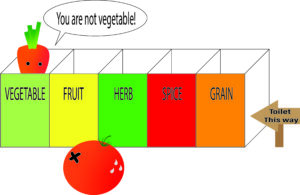
Know your kitchen plants like a botanist
How many names of the fruits and vegetables do you know in the market or your kitchen? To know their common name, it is easy! That is because all plants are labeled before we purchased them from the market. However, do you know what is a vegetable and fruit scientifically? When we buy some vegetables at wet markets or freshly from the farms, we often see tomatoes are selling together with other vegetables such as […]
Read More